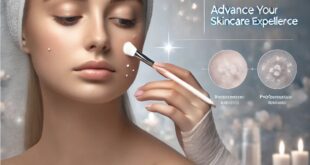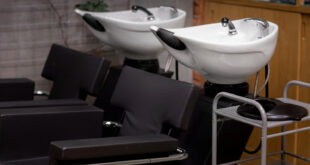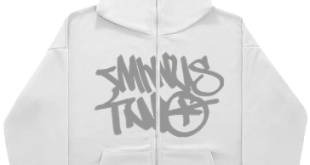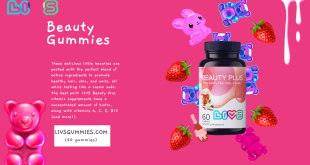A cut and blow dry is one of the most common and versatile hair services offered in salons worldwide. Whether you’re looking to maintain a classic style, add volume, or experiment with a new look, this service has something for everyone. This guide will walk you through the key aspects of a cut blow dry, including what to expect, different types of cuts, blow-drying techniques, and aftercare tips.
What is a Cut and Blow Dry?
A cut and blow dry is a two-part hair service that involves trimming, cutting, or reshaping your hair to achieve a new style, followed by a blow dry to give the hair volume, texture, and shape. It’s a popular choice for clients who want a fresh, polished look without the commitment of more permanent hair treatments. The service is customizable based on hair type, style preferences, and the occasion.
1. The Cut
The first step in this process is the hair cut. This can vary depending on your hair length, desired style, and the expertise of your stylist. Some of the most popular cuts include:
- Short Cuts: A pixie cut, bob, or a shag cut offers a chic, modern look. Short haircuts can be bold and trendy or simple and classic, depending on the texture and shape you prefer.
- Medium Cuts: For those who like the versatility of medium-length hair, cuts such as layered bobs, lob (long bob), or shoulder-length styles are great choices. They can be styled in various ways, from straight and sleek to bouncy curls.
- Long Cuts: Long haircuts are ideal for those looking to maintain their length while adding layers or texture for movement. Styles like long layers, feathered cuts, or soft waves can add dimension without sacrificing length.
- Fringes and Bangs: Many opt for adding a fringe or bangs to their style, which can be tailored to suit your face shape and personal style. Blunt bangs, side-swept bangs, or curtain bangs can all dramatically change the look of your hair.
Factors to Consider Before Your Cut:
- Face Shape: Your stylist will take your face shape into account when choosing a cut that best suits you.
- Hair Type: Curly, straight, or wavy hair each requires different techniques to ensure the cut works well with your natural texture.
- Maintenance: Be sure to discuss how much upkeep you are willing to commit to. Some cuts require more frequent trips to the salon to maintain their shape, while others grow out more seamlessly.
2. The Blow Dry
Once your cut is complete, it’s time for the blow dry. The blow-dry is not only about drying your hair but also about creating a smooth, voluminous, and styled look. The process typically involves using a blow dryer, styling brushes, and products to enhance volume, texture, and shine.
- Blow-Dry Techniques:
- Straight Blow Dry: This is the most common technique for those seeking a sleek and polished finish. Your stylist will use a round brush and a blow dryer to straighten the hair while adding some volume at the roots.
- Voluminous Blow Dry: If you want more body, your stylist may use larger round brushes or even a blow-dry lotion to give your hair lift at the crown.
- Textured or Curled Blow Dry: For a more textured or beachy look, your stylist might use a flat brush or create soft curls by wrapping your hair around the round brush or a curling iron as they dry it.
- Frizz-Free Blow Dry: Using smoothing serums or sprays, the stylist will blow-dry the hair in a way that helps control frizz, resulting in a sleek, shiny finish.
Products Used for Blow Drying:
- Heat Protectant: It is essential to protect your hair from heat damage, and a heat protectant spray or serum is often applied before the blow-dry.
- Mousse or Volume Sprays: For extra volume, a mousse or root-lifting spray may be used at the roots.
- Serums or Oils: These are used to add shine and smoothness, especially for clients with dry or frizzy hair.
Benefits of a Cut and Blow Dry
- Immediate Results: One of the main advantages of a cut and blow dry is the instant transformation. Whether you’re changing your look or simply refreshing your style, the combination of a cut and blow-dry gives your hair a polished, styled finish.
- Versatility: This service can be tailored to any occasion—whether it’s a casual day, a wedding, or a night out. From sleek to voluminous to textured, the style possibilities are endless.
- Expert Styling: Having a professional stylist handle both the cut and blow dry means your hair will look its best. They can use advanced techniques, tools, and products to ensure that the final result is flawless.
Aftercare for Your Cut and Blow Dry
After getting a cut and blow dry, proper aftercare is essential to maintain the freshness of your look. Here are a few tips:
- Avoid Washing Too Soon: After a haircut, it’s often recommended to avoid washing your hair for 24-48 hours to allow the cut to settle and maintain the shape.
- Use the Right Products: Invest in quality hair care products, such as shampoos and conditioners that suit your hair type. If you want to keep your blow-dry looking fresh, use products designed to preserve volume or smoothness.
- Regular Trims: To keep your cut looking sharp, schedule regular trims every 6-8 weeks to maintain the shape and prevent split ends.
- Protect from Heat: If you frequently blow-dry or style your hair at home, make sure to always use a heat protectant spray to prevent damage.
Conclusion
A cut and blow dry is a transformative experience that can completely change the way you feel about your hair. Whether you’re opting for a subtle trim or a bold new style, the combination of a precision cut and expert blow-dry will leave your hair looking fresh, voluminous, and styled to perfection. By understanding the different techniques and benefits, you can ensure your next salon visit will result in a hairstyle that suits you perfectly.
 The Random Collective Where Curiosity Meets Creativity
The Random Collective Where Curiosity Meets Creativity





